Description
Indications
- To relieve from chronic heartburn symptoms and other symptoms associated with GERD
- For the healing of erosive esophagitis
- For maintenance of healing of erosive esophagitis
- In combination with amoxicillin and clarithromycin for eradication of Helicobacter pylori infection in patients with duodenal ulcer disease.
- Zollinger-Ellison Syndrome
- Acid related Dyspepsia
- Duodenal & Gastric ulcer
Absorption: Esomeprazole capsules contain an enteric-coated pellet formulation of esomeprazole magnesium. After oral administration peak plasma levels (Cmax) occur at approximately 1.5 hours (Tmax). The Cmax increases proportionally when the dose is increased, and there is a three-fold increase in the area under the plasma concentration-time curve (AUC) from 20 to 40 mg. At repeated once daily dosing, the systemic bioavailability is approximately 90% compared to 64% after a single dose. The AUC after administration of a single dose of esomeprazole is decreased by 33-53% after food intake compared to fasting conditions. Esomeprazole should be taken at least one hour before meals.
Distribution: Esomeprazole is 97% bound to plasma proteins. Plasma protein binding is constant over the concentration range of 2 20 mmol/L. The apparent volume of distribution at steady state in healthy volunteers is approximately 16 L.
Metabolism: Esomeprazole is extensively metabolized in the liver by the cytochrome P450 (CYP) enzyme system. The metabolites of esomeprazole lack anti-secretory activity. The major part of esomeprazole’s metabolism is dependent upon the CYP2C19 isoenzyme, which forms the hydroxy and desmethyl metabolites. The remaining amount is dependent on CYP3A4 which forms the sulphone metabolite.
Excretion: The plasma elimination half-life of esomeprazole is approximately 1–1.5 hours. Less than 1% of parent drug is excreted in the urine. Approximately 80% of an oral dose of esomeprazole is excreted as inactive metabolites in the urine, and the remainder is found as inactive metabolites in the faeces.
Combination Therapy with Antimicrobials: Esomeprazole magnesium 40 mg once daily is given in combination with clarithromycin 500 mg twice daily and amoxicillin 1000 mg twice daily for 7 days. The mean steady state AUC and Cmax of Esomeprazole increased by 70% and 18%, respectively, during triple combination therapy compared to treatment with Esomeprazole alone. The pharmacokinetic parameters for clarithromycin and amoxicillin are similar during triple combination therapy and administration of each drug alone. However, the mean AUC and Cmax for 14-hydroxyclarithromycin are increased by 19% and 22%, respectively, during triple combination therapy compared to treatment with clarithromycin alone. This increase in exposure to 14-hydroxyclarithromycin is not considered to be clinically significant.
Dosage
- Healing of Erosive Esophagitis: 20 mg or 40 mg Once Daily for 4-8 Weeks. The majority of patients are healed within 4 to 8 weeks. For patients who don’t heal after 4-8 weeks, an additional 4-8 weeks of treatment may be considered. Maintenance of Healing of Erosive
- Esophagitis: 20 mg Once Daily (Clinical studies did not extend 6 months).
- Symptomatic GERD: 20 mg Once Daily for 4 Weeks. If symptoms do not resolve completely after 4 weeks, an additional 4 weeks of treatment may be considered.
- Helicobacter Pylori eradication: Triple Therapy to reduce the risk of Duodenal Ulcer recurrence-Esomeprazole 40 mg Once Daily for 10 days, Amoxicillin 1000 mg Twice Daily for 10 days, Clarithromycin 500 mg Twice Daily for 10 days.
- Zollinger-Ellison Syndrome: The dose is 20-80 mg once daily. The dosage should be adjusted individually and treatment continued as long as clinically indicated.
- Acid-related Dyspepsia: 20-40 mg once daily for 2-4 weeks according to the response.
- Duodenal ulcer: 20 mg once daily for 2-4 weeks. Gastric ulcer: 20-40 mg once daily for 4-8 weeks.
IV Injection or IV infusion:
GERD with Erosive Esophagitis–
Adult Patients (≥18 years):
- 20 mg or 40 mg once daily
- IV Injection: >3 Minutes, IV Infusion: 10-30 minutes
Pediatric Patients (1 year to 17 years)
- Body weight <55 kg: 10 mg Once daily
- Body Weight ≥55 kg: 20 once daily
- 1 month to <1 year: 0.5 mg/kg once daily
- IV Infusion: 10-30 minutes
Risk reduction of rebleeding of Gastric or Duodenal Ulcers following therapeutic endoscopy in adults–
Adult Patients (≥18 years)
- 80 mg
- IV Infusion: 30 minutes, followed by a continuous infusion of 8 mg/h for a total treatment duration of 72 hours.
Administration
Oral Suspension: Whole contents of the packet should be taken into a small glass containing 15 ml. of water. The mixer should be stirred well and leave 2 to 3 minutes to thicken. Stir again and drink within 30 minutes. If any medicine remains after drinking, add more water, stir, and drink immediately. If the suspension is to be administered through a nasogastric or gastric tube, the volume of water in the syringe should be 15 ml. & immediately shake the syringe and leave 2 to 3 minutes to thicken. Shake the syringe and inject it through the nasogastric or gastric tube into the stomach within 30 minutes. An appropriately sized syringe should be used. Shake and flush any remaining contents from the nasogastric or gastric tube into the stomach.
IV Injection: Solution for injection is prepared by adding 5 ml of 0.9% Sodium Chloride for intravenous injection into the vial containing the dry powder. The reconstituted solution for injection is clear and colorless to very slightly yellow. IV injection must be administrated intravenously over a period of at least 3 minutes. Prepared solution must be used within 12 hours of preparation and can be exposed to normal indoor lighting at a maximum of 30°C.
Interaction
Esotid may potentially interfere with CYP2C19, the major Esotid metabolizing enzyme. Co-administration of Esotid 30 mg and diazepam, a CYP2C19 substrate has resulted in a 45% decrease in clearance of diazepam. Increased plasma levels of diazepam have been observed 12 hours after dosing and onwards. Esotid inhibits gastric acid secretion. Therefore, Esotid may interfere with the absorption of drugs where gastric pH is an important determinant of bioavailability (e.g., ketoconazole, iron salts and digoxin).
Co-administration of oral contraceptives, diazepam, phenytoin, or quinidine do not seem to change the pharmacokinetic profile of Esotid.
Combination Therapy with Clarithromycin: Co-administration of Esotid, clarithromycin, and amoxicillin has resulted in increases in the plasma levels of Esotid and 14-hydroxyclarithromycin.
Contraindications
Side Effects
Pregnancy & Lactation
Precautions & Warnings
Information for patients: Esotid capsules should be taken at least one hour before meals. For patients who have difficulty swallowing capsules, one tablespoon of applesauce can be added to an empty bowl and the Esotid capsules can be opened, and the pellets inside the capsule carefully emptied onto the applesauce. The pellets should be mixed with the applesauce and then swallowed immediately. The applesauce used should not be hot and should be soft enough to be swallowed without chewing. The pellets should not be chewed or crushed. The pellet/applesauce mixture should not be stored for future use. Antacids may be used while taking Esotid.
Use in Special Populations
Geriatric Use: No overall differences in safety and efficacy have been observed between the elderly and younger individuals, and other reported clinical experience has not identified differences in responses between the elderly and younger patients, but greater sensitivity of some older individuals cannot be ruled out
Hepatic Insufficiency: No dosage adjustment is recommended for patients with mild to moderate hepatic insufficiency. However, in patients with severe hepatic insufficiency, a dose of 20 mg once daily should not be exceeded.
Renal Insufficiency: The Pharmacokinetics of Esotid in patients with renal impairment are not expected to be altered relative to healthy volunteers as less than 1% of Esotid is excreted unchanged in the urine.
Overdose Effects
Storage Conditions
Chemical Structure
| Molecular Formula : | C17H19N3O3S |
| Chemical Structure : |
Common Questions about Esotid 20 mg Tablet
What is Esotid 20 mg Tablet?
What is Esotid 20 mg Tablet used for?
What are the side effects of Esotid 20 mg Tablet?
Can I take Esotid 20 mg Tablet if I am pregnant or breastfeeding?
How long does it take for Esotid 20 mg Tablet to work?
Quick Tips
- Esotid 20 mg Tablet is a well-tolerated medicine and provides relief for a long time.
- Avoid eating late at night or before bedtime.
- Inform your doctor if you get watery diarrhea, fever or stomach pain that does not go away.
- Long-term use of Esotid 20 mg Tablet can cause weak bones and a deficiency of minerals such as magnesium. Take adequate dietary intake of calcium and magnesium or their supplements as prescribed by your doctor.
- Consult your doctor right away if you develop decreased urination, edema (swelling due to fluid retention), lower back pain, nausea, fatigue, and rash or fever. These could be signs of a kidney problem.

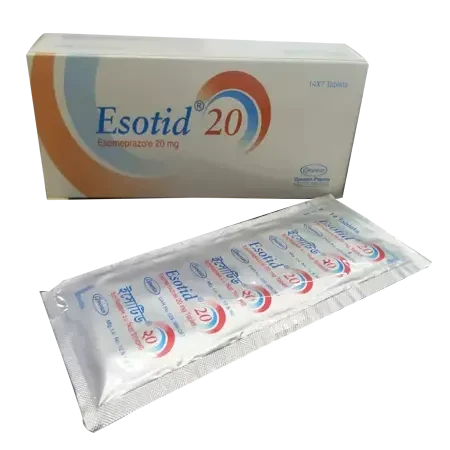
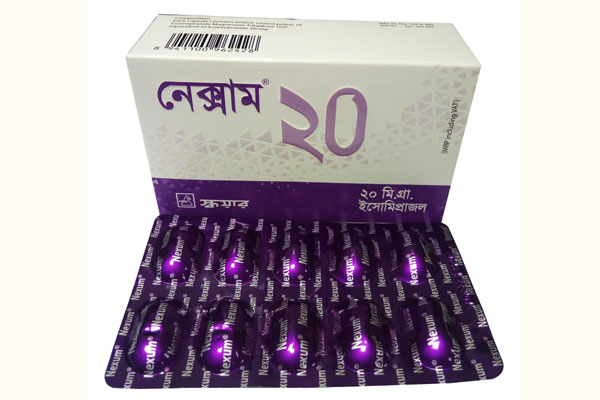

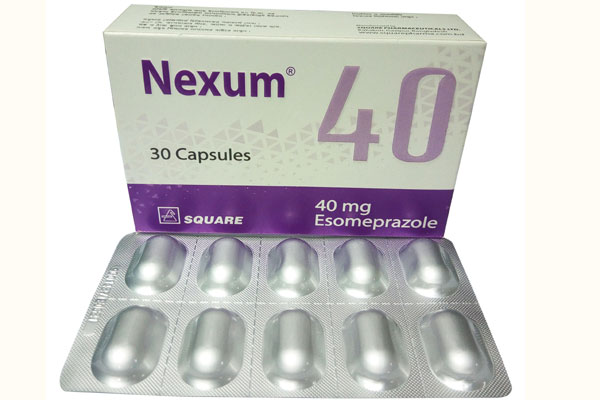
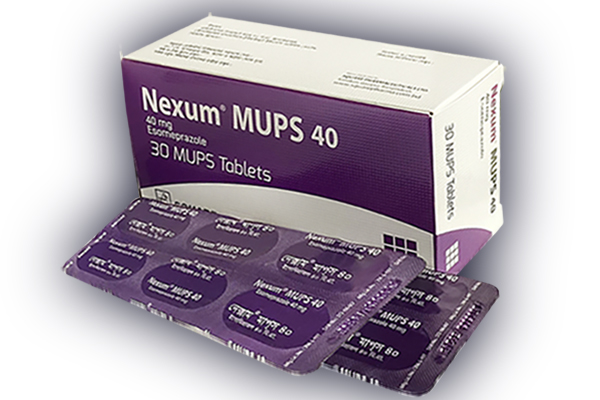
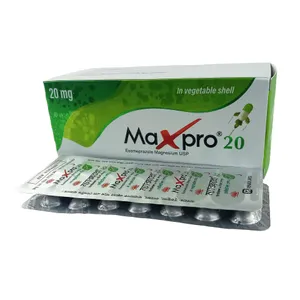
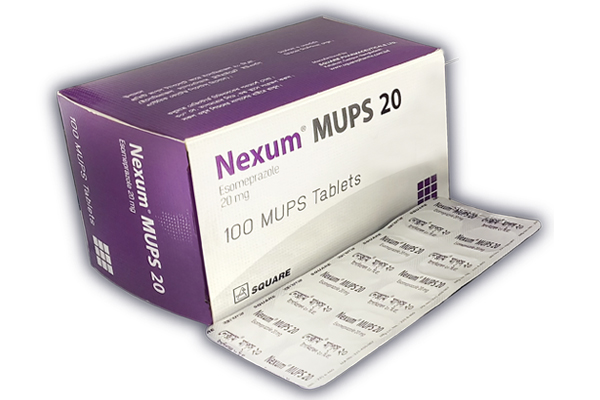
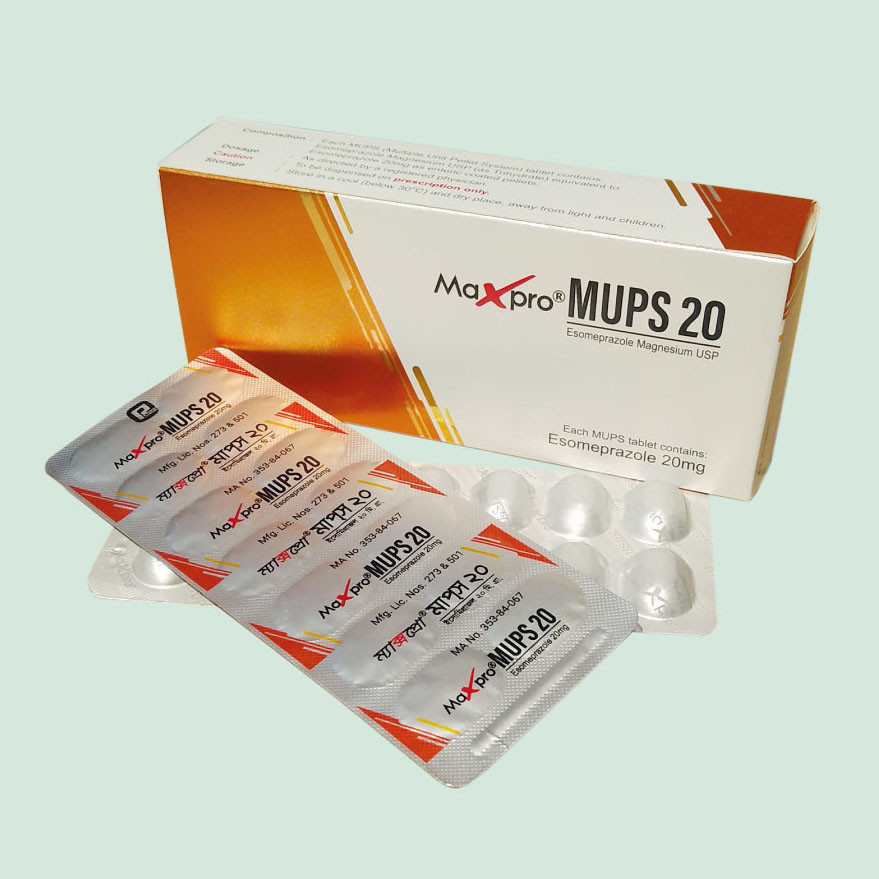
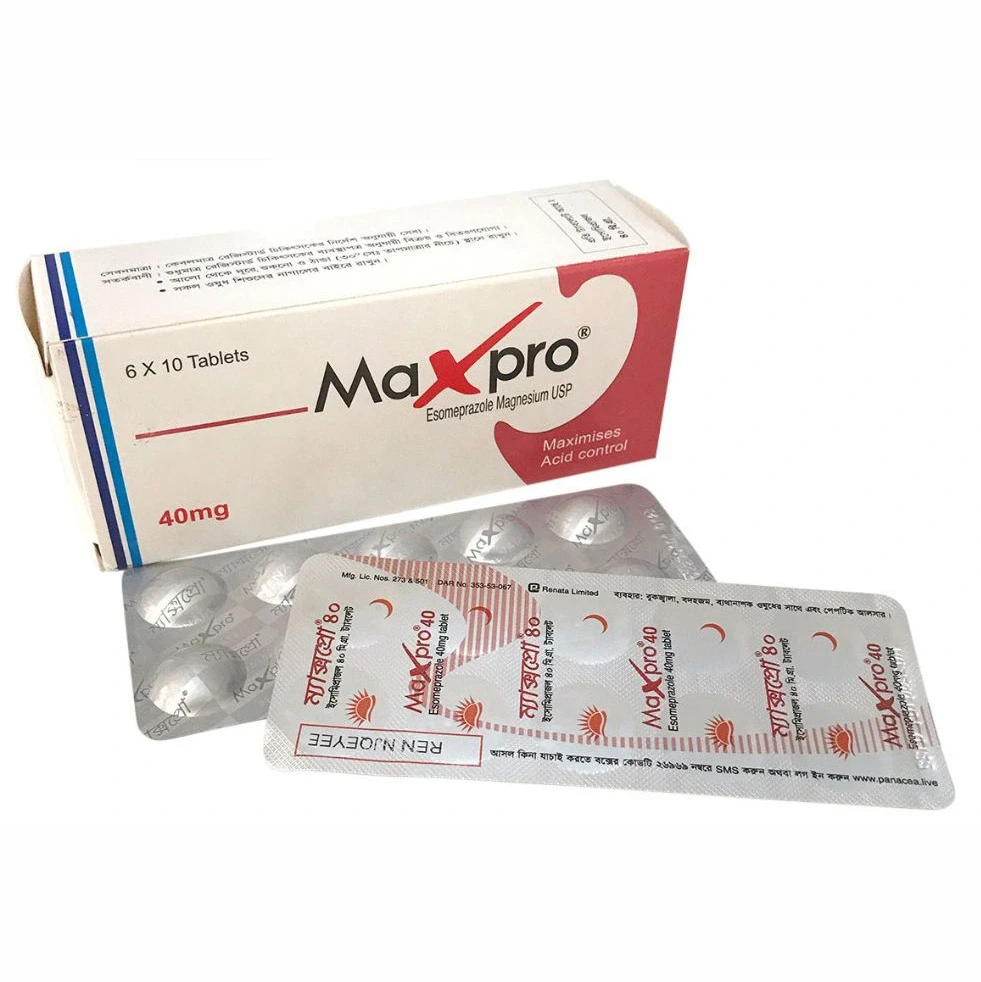
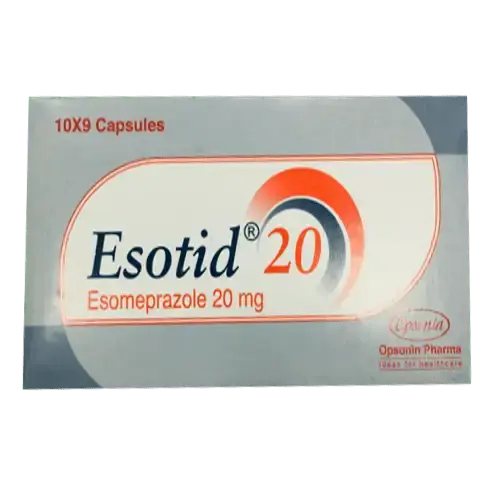
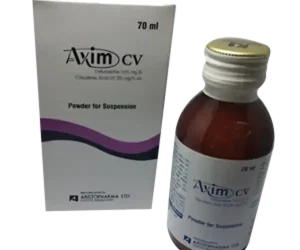
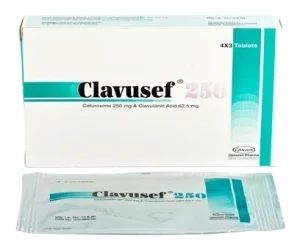
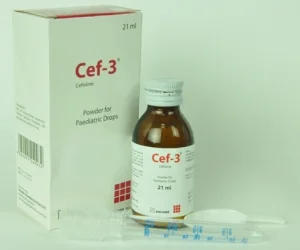
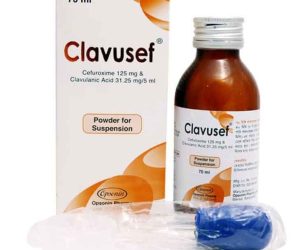
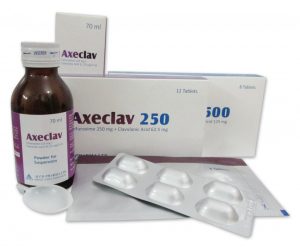
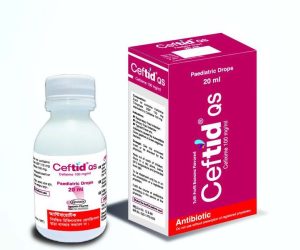
Reviews
There are no reviews yet.